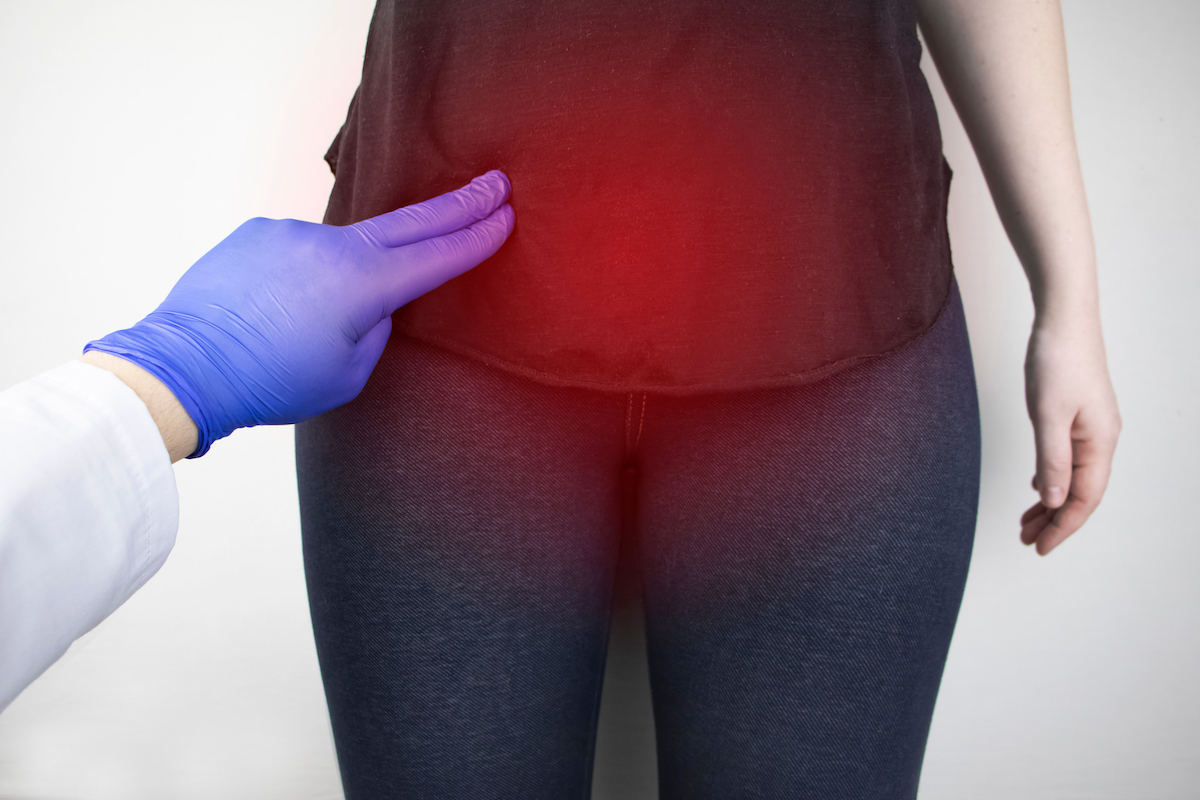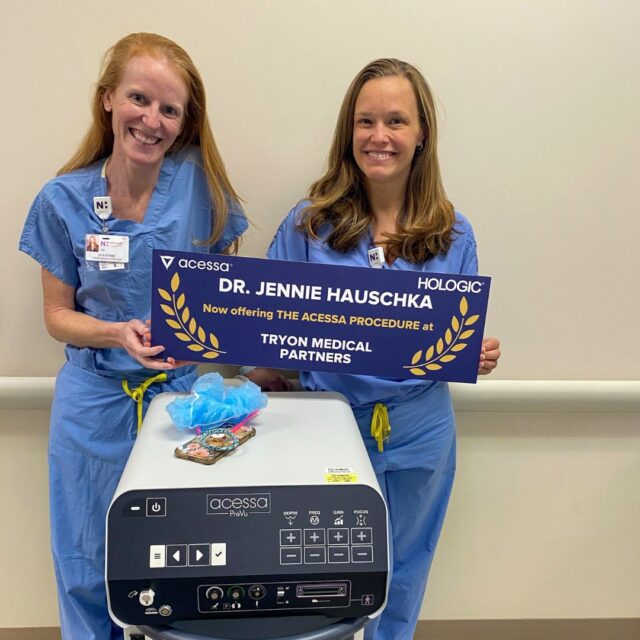
Are you one of the 70% of women with uterine fibroids? Many women may not even know they have fibroids, which are benign muscle tumors in the uterus. But for others suffering with symptoms, fibroids can be debilitating. While hysterectomy, myomectomy or uterine artery embolization (UAE) used to be the only way to treat fibroids, new minimally invasive treatments options are now available. Tryon Women Center’s Dr. Jennie Hauschka shares more.
How do you know if you have fibroids? Do they ever go away on their own? Who is most at risk for developing them?
For many women, fibroids do not cause any symptoms. Other women learn that they have them when seeking treatment for symptoms like pelvic pain and pressure or heavy menstrual bleeding.
Fibroids can stay stable in size or continue to grow in premenopausal women. They typically stop growing and can even shrink after menopause. However, they do not go away on their own, and many grow back after removal.
While fibroids are common in women of all backgrounds, African American women have a higher chance of developing them and needing treatment.
Symptoms of uterine fibroids include:
- Periods that last longer than a week
- Heavy periods causing bleeding through clothes
- Pain and pressure in pelvis, legs or lower back
- Unexplained exhaustion (may be anemia)
- Having to go to the bathroom a little too often
What are some treatment options for fibroids?
In the past, there were three ways to treat uterine fibroids:
- With uterine artery embolization (UAE), it’s not recommended to ever get pregnant so this is not a viable treatment option for many women, and it’s a painful procedure.
- A myomectomy involves incisions in the lower abdomen. There are more risks, including blood loss, and requires staying in the hospital one to two days, with several weeks of recovery time.
- In a hysterectomy, the uterus is removed and recovery time takes about four to six weeks. Women will no longer menstruate or be able to get pregnant.
The last five years have brought much advancement in minimally invasive treatment options for uterine fibroids:
Medication: Pills that are a combination of low-dose hormones can decrease the size of fibroids and help with bleeding. When heavy bleeding is the most frequent complaint, hormonal treatments such as birth control pills and Myfembree®, contraceptive injections and intrauterine devices (IUDs) including Mirena®, which is FDA-approved for heavy menstrual bleeding, can be prescribed.
Hysteroscopic myomectomy: For fibroids under 5 centimeters in size located inside the cavity of the uterus or within the inner lining, hysteroscopic myomectomy is an option. In this procedure, an operative hysteroscope is inserted through the vagina and cervix into the uterus, allowing a physician to see into the uterus and remove the fibroids. There are no incisions and recovery time is usually one to two days.
Heat technology: This has been used for many years to destroy tumor tissue in parts of the body like the liver, and it’s now being applied to fibroids. There are two different treatment options depending on the location of the fibroids and sometimes, both treatments may be needed. Several fibroids can be addressed at one time with each treatment.
Acessa® Laparoscopic Radiofrequency Ablation

The Acessa is an outpatient procedure to address fibroids located outside the uterus, and involves just a few small abdominal incisions. A camera is inserted into the belly button to look at the uterus, with a separate port site made in the upper abdomen for the ultrasound probe. A needle is inserted into each fibroid to destroy the tissue. Done under general anesthesia in about 1.5 hours, patients can return to work in about four to five days, with normal recovery time ranging from nine to 10 days. Women can experience long-term relief without damaging or removing healthy tissue.
Dr. Hauschka shares, “The Acessa is a low-risk procedure for young, healthy women that yields significant results. There is less risk of infection, less blood loss and less downtime than previous fibroid treatments. Most women have a reduction in fibroid size by 50 percent and 40-60 percent have less bleeding from their fibroids.”
Sonata® Transcervical Fibroid Ablation
The Sonata Treatment is for fibroids located inside the uterus and goes through the cervix (meaning no incisions). An ultrasound device allows physicians to see the fibroids and treat them with ablation (determining how much heat is needed to destroy the tissue, and for how long it is needed). This procedure takes about an hour to 1.5 hours and is also done under general anesthesia but it is not as deep of sedation as the Acessa. Patients can return to work in about three days and are back to normal within a week.
These two new minimally invasive treatments have not been shown to affect pregnancy outcomes so they are a great option for those with fibroids who hope to have children in the future.
Dr. Hauschka adds that the Acessa and Sonata are a huge step forward for treating something that is so common. “In my experience,” says Dr. Hauschka, “women suffer longer than they have to with fibroids and don’t seek treatment until it becomes unbearable.”
If you are one of the many women with symptoms, talk to your doctor and discuss the fibroid treatment options that may be right for you.

